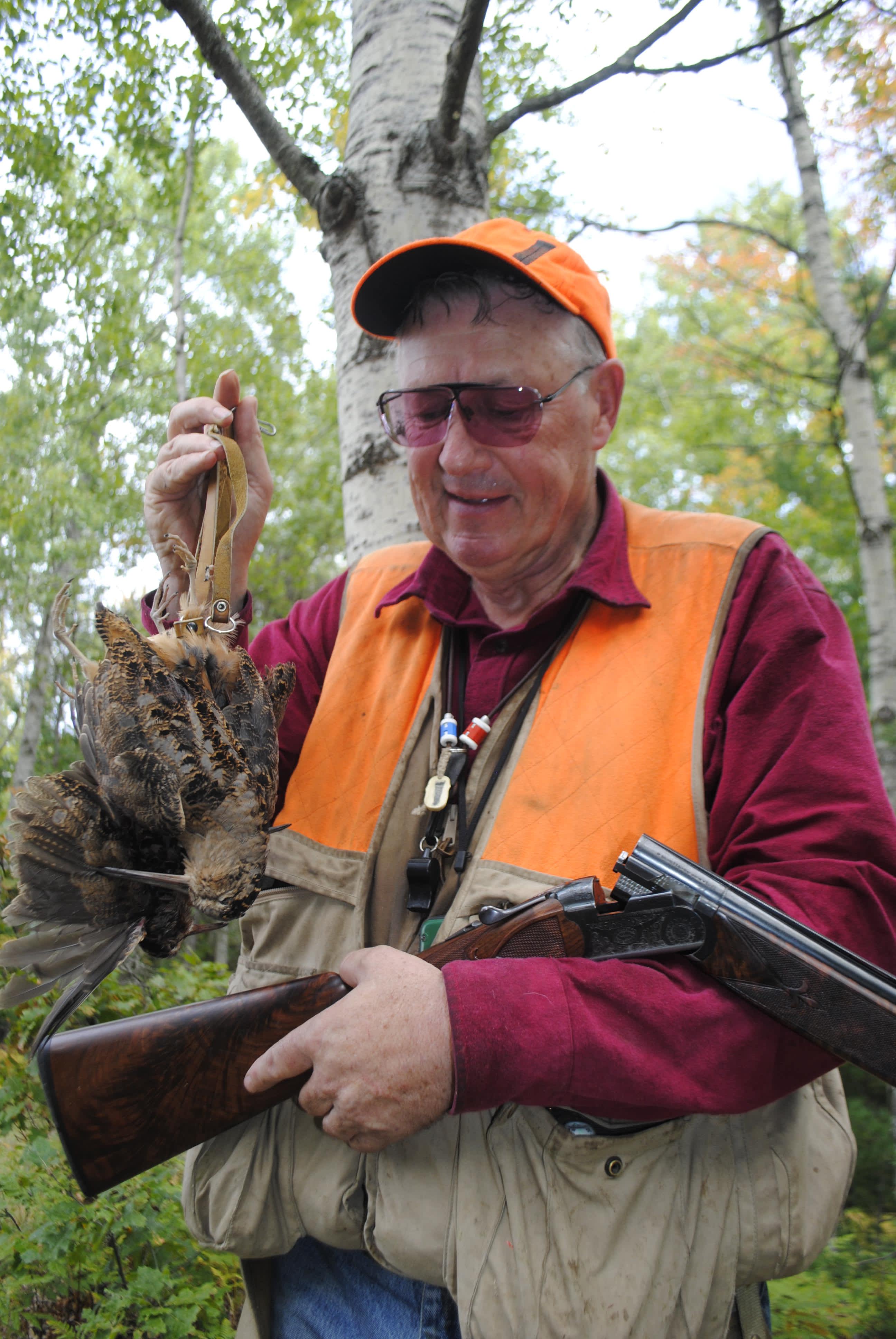Woodcock Make Michigan an Upland Hunter’s Haven
Bob Gwizdz 10.18.13

Perhaps no two upland game birds are so closely linked by hunters as Ruffed Grouse and woodcock. Both prefer young forests with significant stem density. But from there, they diverge dramatically. Ruffed Grouse are celebrities. Woodcock are B-listers.
Ruffed Grouse are roughly chicken-sized, non-migratory birds that can be found from the Atlantic Ocean in Canada and the northern United States to Alaska and south down the Appalachian Mountains to northern Georgia. Woodcock, on the other hand, are smaller birds that are closely related to many shorebirds species—but have adapted to upland living—that breed mostly in the Northeastern United States and migrate south to the Gulf Coast states in the winter.
Michigan is well-known for both grouse and woodcock. And though you may get some argument among aficionados across the country about where the best Ruffed Grouse hunting occurs, there is no such argument when it comes to woodcock. Michigan is the woodcock-huntingest state in the Union.
“When you look at woodcock abundance, we’re number one in the country,” said Al Stewart, the upland game bird specialist with the Michigan Department of Natural Resources. “We have been, we continue to be, and it shows up in the harvest.”
Woodcock populations have been in decline across North America—by about one percent a year—for the last 45 years.
“They’re not endangered,” Stewart said. “Their population is still strong. But the decline does have biologists concerned and the research clearly indicates the decline is related to habitat loss. When you look at other bird species that use young forest, they’re also seeing declines and some of them are in more of a decline than woodcock.”
Although woodcock abundance has fallen in Michigan over the last four or five decades, the decline has not been as precipitous as it has most other places. That’s because Michigan “has a large forest base to work with and state-land forest management practices help maintain young forests,” Stewart said. “We’ve been working real hard to maintain various age-classes of trees on public land.”
It hasn’t been easy; at some point “old-age forests” became all the rage—just as wetlands did before that—and activists have campaigned for decreased timber harvesting. Professional wildlife managers have responded with the Woodcock and Young Forest Initiative, a national program created in 2007 to help educate the public to the value of early successional forests and the species that use them.

Woodcock are something of a missing link in the bird world, more closely resembling snipe, say, than any other upland game bird. They feed on earthworms and other invertebrates by probing with their bills, which have a prehensile tip, into moist soils. Because of that, you won’t find them feeding in sandy soils—which rarely support the necessary invertebrates—though that is where much of the aspen in Michigan is found. But they will be in there (it’s not unusual to flush woodcock and grouse from the same thickets) loafing or resting during daytime hours.
Woodcock are highly dependent upon their camouflage and their eyesight for their survival. Woodcock have large eyes, found in the middle of the sides of their heads, which allows them to see 360 degrees. As such, they are rarely found in tall grass, where they cannot see very far. Think alders along a creek bottom.
Ask a bird hunter in the young forest what he’s chasing and odds are he’ll say grouse, even if he has a couple of woodcock in his game pouch.
“There are some hunters who are grouse hunters and when they kick up a woodcock when out hunting, they view it as a distraction to the dogs,” said Stewart. “And there are some people who are woodcock fanatics and they look very specifically for them.
“Then there are guys who hunt the habitats where both birds are found and are happy to find either one.”
You can put me (and Stewart, too) in that last group. Although I admittedly prefer grouse to woodcock as table fare, I have a fond place in my heart for woodcock. They typically will hold a little tighter than grouse—which have more of a tendency to run—so they are good birds for training pointing dogs, especially young ones, who can put it all together when you step in front of them and flush a bird right off their noses.
Called by a handful of colloquial names, such as bogsuckers and timberdoodles, woodcock are known for their erratic flight patterns; some hunters say they have more trouble hitting them than the faster (but more straightaway flying) Ruffed Grouse. But there’s little doubt that woodcock become increasingly important to young-forest bird hunters in times like these, when the cyclical ruffed grouse populations are on the wane.
“In years when grouse are plentiful, hunters talk about the number of grouse flushed per hour,” Stewart said. “In years when grouse numbers are lean, they talk more about birds flushed per hour.
“In years when grouse numbers are down, woodcock become more valuable.”
For more information on Michigan hunting go to michigan.org. Click here to purchase a Michigan hunting license online.

